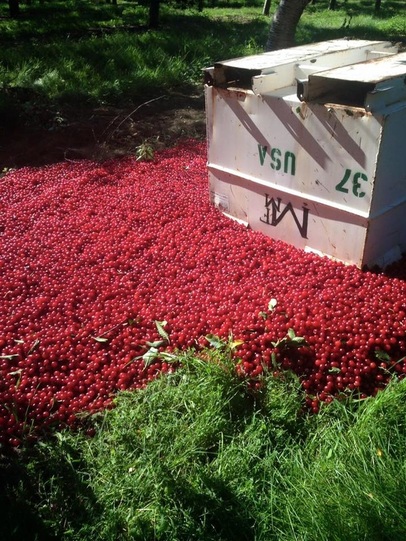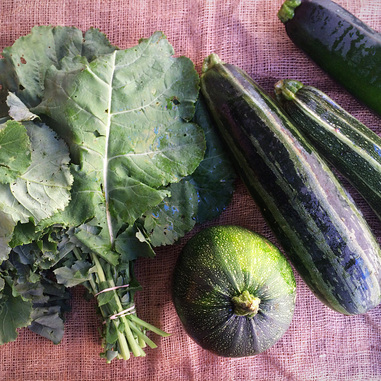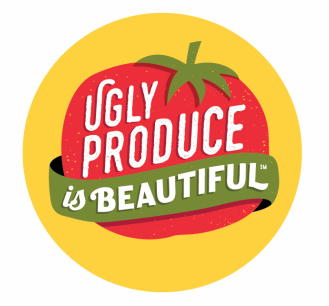 by Sarah Phillips, CEO and founder, Ugly Produce is Beautiful Fruit smoothies and juices seem to be the rage - I see lots of photos of them from accounts that I follow on my @UglyProduceIsBeautiful Instagram feed. I even have a Blueberry Acai Smoothie Bowl With Grilled Peaches recipe using ugly produce posted. Smoothies and juices are for sale all over the place. But I often ask myself - how healthy are they and what do they contain? When fruit juice is made, the pulp is removed and the juice remains. The result is that the sugar is more concentrated and the juice contains little if any fiber, and food waste is created from the fruit pulp. When smoothies, on the other hand, are made, the whole fruit is used, so they maintain their fiber, even though it has been pulverized. This fiber helps slow down the absorption of fructose, the main sugar in fruit. But Robin Foroutan, a spokeswoman for the Academy of Nutrition and Dietetics, a trade group representing nutrition professionals. recommends that having that having the whole fruit is best - because it contains plenty of fiber with juice. “Juice would cause the biggest spike in blood sugar,” Ms. Foroutan said. “An all-fruit smoothie would also cause a spike in blood sugar, though probably not as much. Eating the fruit whole would have the most gentle effect.” But comparing juices to smoothies as far as calories and sugars go are pretty much neck and neck: "It’s hard to make comparisons when it comes to juice and smoothies, but an eight-ounce cup of unsweetened apple juice or orange juice contains at least 22 grams of sugar (equivalent to about five and a half teaspoons of sugar), and both contain less than a gram of fiber. A smoothie made from a banana and a cup of frozen raspberries has only slightly less sugar – about 20 grams -- but 12 grams of fiber (three grams in the banana, and nine grams in the raspberries)." And some smoothies are found to contain as many calories as the common milkshake. So don't be fooled! Source: "Are Smoothies Better for You Than Juices?" Well Blogs, New York Times, by Roni Caryn Rabin, August 5, 2016; Aug 6 9am Join UPIB and follow @UglyProduceIsBeautiful and @food on Instagram. There are hundreds of pages of recipes, tips, techniques, and food information on my site, www.CraftyBaking.com
5 Comments
 by Sarah Phillips, CEO and founder, Ugly Produce is Beautiful A Traverse City, Michigan, tart cherry farmer is leaving 14% of his crop this year to rot on the ground to comply with an industry marketing agreement intended to keep cherry prices stable. And he's not happy about it. "These cherries are beautiful!" Santucci posted with the photo. "But, we have to dump 14% of our tart cherry crop on the ground to rot. Why? So we can allow the import of 200 million pounds of cherries from overseas! It just doesn't seem right." This blatant type of food waste with perfectly good produce is what Ugly Produce is Beautiful is trying to make the public aware of, so we can make change to this hideous system. I agree with the Detroit Free Press that Santucci could have worked with the board to find a place to donate the surplus cherries, which typically aren't eaten raw like sweet cherries because of their very short shelf-life, but are instead used in products such as pie filling and jams. But the overall United States system of dumping produce to keep prices stable and to allow for foreign imports, has to change. We started Farmer Share as a small step towards selling ugly produce from the farm that would otherwise go to waste. We know that our initiative will grow through time. Join UPIB and follow @UglyProduceIsBeautiful and @food on Instagram. There are hundreds of pages of recipes, tips, techniques, and food information on my site, www.CraftyBaking.com  by Sarah Phillips, CEO and founder, Ugly Produce is Beautiful We are part way through our New York City's summer Our Farmer Share! It's time to sign-up for our FALL FARMER SHARE! Local Roots NYC has partnered up with Ugly Produce is Beautiful to bring you OUR FARMER SHARE: 3lbs of produce each week that are slightly scarred or bruised but still beautiful despite what traditional markets tell us and still perfect to cook with. You’ll receive 2-3 varieties of vegetables selected by our lovely farmers at a price that’s under retail value. With OUR FARMER SHARE, you’ll get extra items to cook with while our farmers can get more out of their bounty. Why should you join a CSA? What is OUR FARMER SHARE? Join UPIB and follow @UglyProduceIsBeautiful and @LocalRootsNYC on Instagram.  by Sarah Phillips, CEO and founder, Ugly Produce is Beautiful Organic food may be a little more expensive, but its benefits far outweigh the cost. More and more consumers are switching to organic foods due to the many benefits it offers. Organic agriculture is an ecological production management system that promotes and enhances biodiversity, biological cycles and soil biological activity. It is based on minimal use of off-farm inputs and on management practices that restore, maintain and enhance ecological harmony. Organic food is produced without using most conventional pesticides; fertilizers made with synthetic ingredients or sewage sludge; bioengineering (GMOs); or ionizing radiation. Non-organic practices leave a chemical residue on the produce that sometimes penetrates the skin as well. Contrary to popular belief, washing the food doesn’t remove all of them. Since organic foods are grown without using chemicals, you can be assured that these harmful synthetic cancer-causing materials won’t accumulate in your body. NOTE: Organic agriculture practices cannot ensure that products are completely free of residues; however, methods are used to minimize pollution from air, soil and water. Organic farms have to meet strict guidelines in their farming methods. If there’s a certified organic on the food you are eating, you’re assured that the food has been carefully grown and its source has been certified and inspected by an Organic Certification Body. The USDA National Organic Program is the only system in the U.S. that provides certified standards for organic food. Foods labeled "USDA Organic" are the gold standard for health and sustainability. Organic food is produced by farmers who emphasize the use of renewable resources and the conservation of soil and water to enhance environmental quality for future generations. When produce in the field is sprayed with chemicals, the pesticide that drifts in the air can contaminate a wide area beyond the farm. Water run-off carrying chemicals can contaminate a water system for a community. Growing organic produce also means that dangerous pesticide drift and chemical runoff will not harm your community. Source: What is organic production? Join UPIB and follow @UglyProduceIsBeautiful and @food on Instagram. There are hundreds of pages of recipes, tips, techniques, and food information on my site, www.CraftyBaking.com |
UPIB BLOGWelcome to the Ugly Produce is Beautiful Blog where we discuss important topics. Archives
November 2016
Categories |
|

 RSS Feed
RSS Feed
